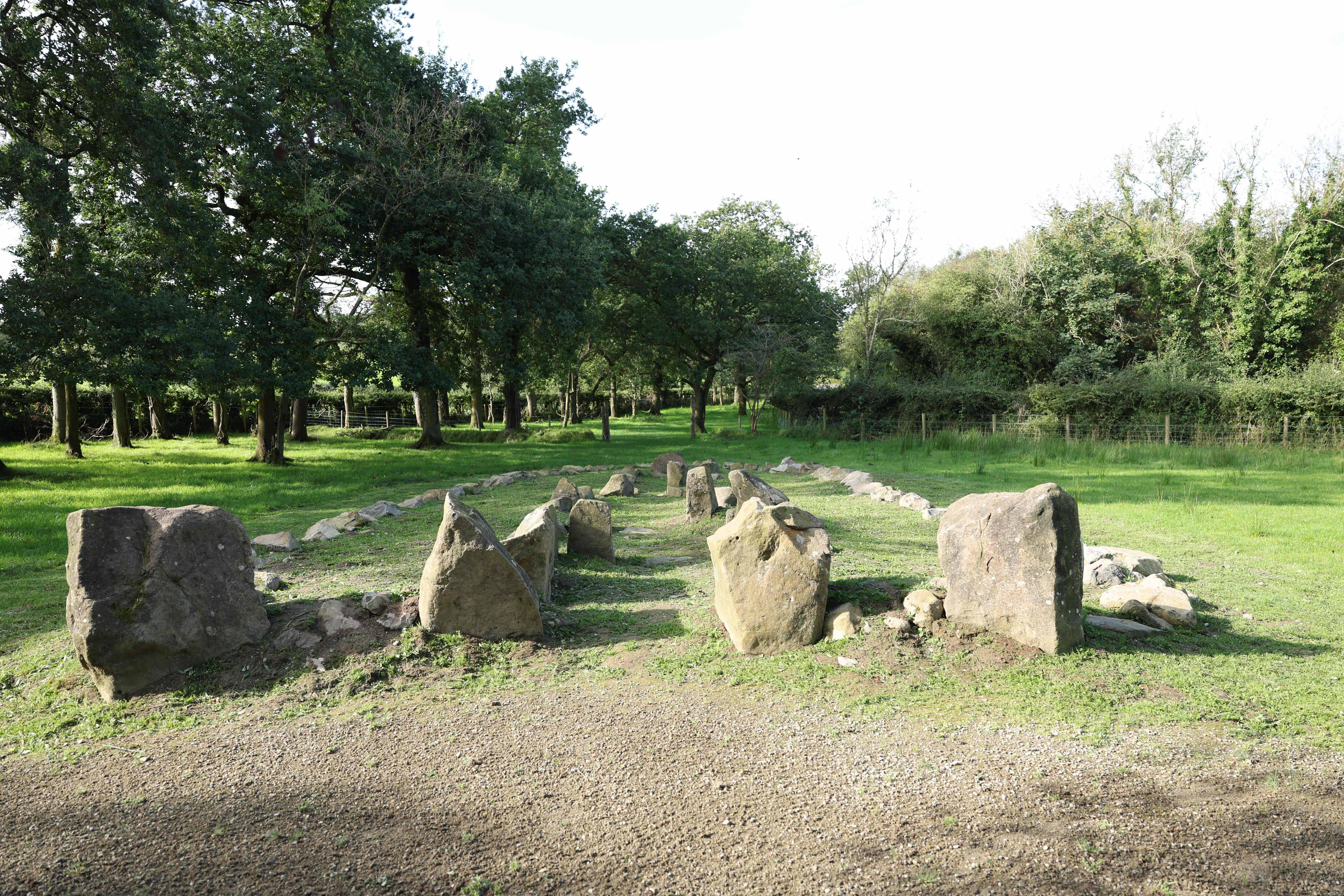Tomb older than pyramids secures new home at Ulster Folk Museum
Court tomb, first found in Co Armagh, was excavated to save it from quarrying work in 1966

Your support helps us to tell the story
From reproductive rights to climate change to Big Tech, The Independent is on the ground when the story is developing. Whether it's investigating the financials of Elon Musk's pro-Trump PAC or producing our latest documentary, 'The A Word', which shines a light on the American women fighting for reproductive rights, we know how important it is to parse out the facts from the messaging.
At such a critical moment in US history, we need reporters on the ground. Your donation allows us to keep sending journalists to speak to both sides of the story.
The Independent is trusted by Americans across the entire political spectrum. And unlike many other quality news outlets, we choose not to lock Americans out of our reporting and analysis with paywalls. We believe quality journalism should be available to everyone, paid for by those who can afford it.
Your support makes all the difference.A court tomb older than Egypt’s pyramids has secured a permanent new home on display at the Ulster Folk Museum.
The 6,000-year-old tomb, which dates back to the Neolithic era, was discovered in Ballintaggart, Co Armagh.
It was excavated from its original location due to the risk of destruction by the expansion of a neighbouring quarry in 1966.
Laurence Flanagan, the then keeper of antiquities at Ulster Museum, was able to save the tomb’s stones and reconstruct it outside the south Belfast attraction.
When Ulster Museum was renovated in 2006 the stones were put in storage at Ulster Folk Museum, and they stayed there until earlier this year when the restoration project began.
William Blair, director of collections at National Museums NI, said they are delighted to be able to reconstruct the Ballintaggart Court Tomb.
“It is a brilliant illustration of how the museum can connect Ulster’s unique heritage spanning thousands of years to the present day. We are grateful to our project partners for their input and support,” he said.
The ancient structure is one of more than 400 court tombs in Ireland which have a distinctly northern distribution.
They pre-date the pyramids in Egypt and offer a unique insight into Ireland’s ancient past.
Dr Greer Ramsey, curator of archaeology at National Museums NI, explained the historical background of the tombs.
He said that large burial structures, similar to the shape and size of the Ballintaggart Court Tomb, became more popular in Ireland as people began to create permanent settlements.
“Court tombs take their name from a semi-circular arc of upright stones marking the entrance to the burial chambers,” he said.
“The Neolithic period, to which they belong, was revolutionary as it marked the end to a nomadic or hunter-gatherer way of life.
“New settlers arrived about 6,000 years ago, bringing with them farming skills and many of the plants and domestic animals we are familiar with today.
“With a more secure food supply, people could live for longer in one place and invest in larger, more permanent structures, such as tombs.”
The Richmount Rural Community Association, Portadown, has also been integral to the process of reconstituting and making the ancient tomb accessible to the public again.
Chairman of the association Joe Garvey added: “It’s important that people can understand the rich local history of County Armagh through the Ballintaggart Court Tomb, or Giant’s Grave as it is known locally.
“We’re proud to be involved in seeing it reconstructed at the Ulster Folk Museum where people will be able to enjoy it for generations to come.”
The tomb will stand prominently at the Ulster Folk Museum, providing an important new layer of pre-history at the Co Down attraction.
The reconstruction of the tomb arrives at a significant time for the Ulster Folk Museum, coinciding with the announcement of investment plans, which include expanding public access to the collection and heritage assets.
National Museums NI was assisted by Restoration Works Ltd and archaeologists from Queen’s University Belfast in reconstructing the tomb stone by stone over recent months.
Researchers from the Centre for Community Archaeology at Queen’s created models of each of the stones.
These models were then 3D scanned, allowing for a full 360-degree examination of each of them, so they could be accurately situated and installed on site.
The Ballintaggart Court Tomb is in the rural area of Ulster Folk Museum. Access is included as part of general admission to the museum. For more information and to book tickets visit ulsterfolkmuseum.org.


